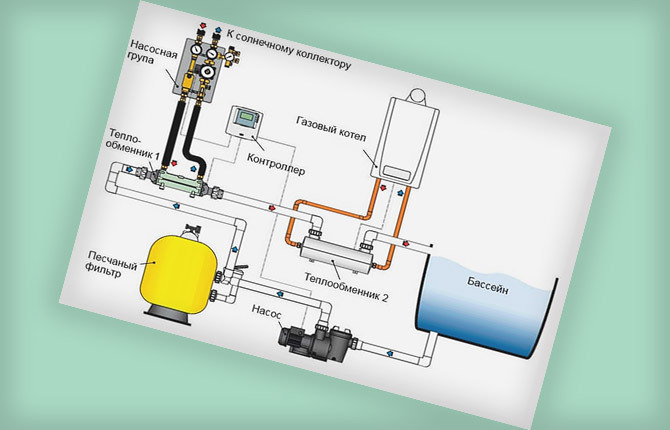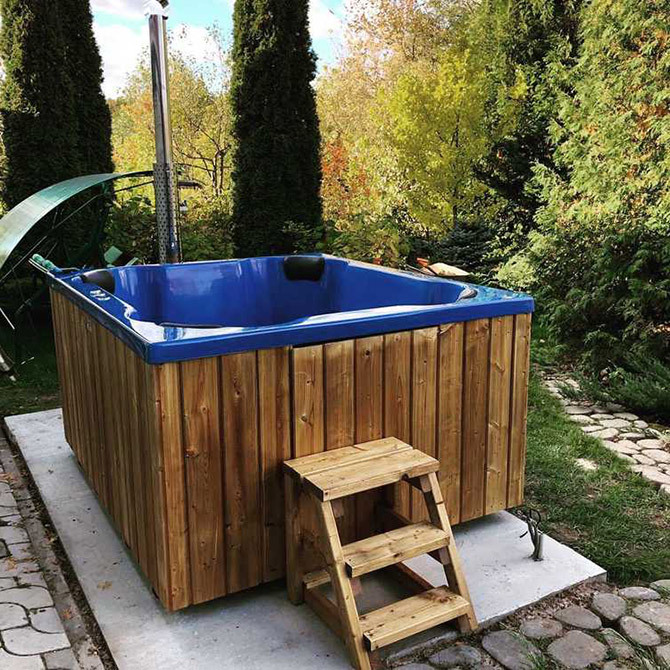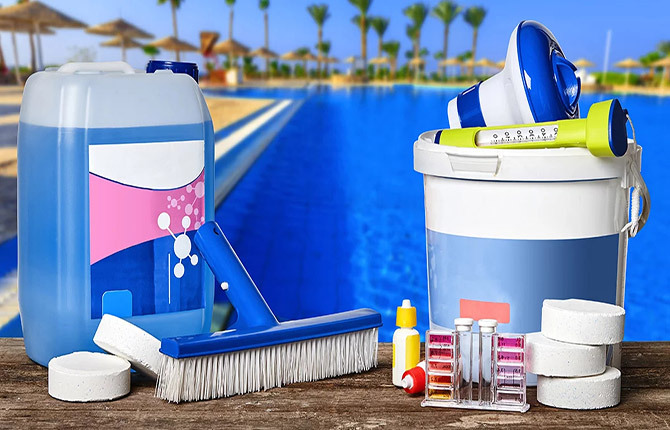The presence of a source of constantly hot water in the house is one of the most important everyday benefits, allowing you to wash dishes or take a shower at any time. Even in urban hot-water apartments, there can be interruptions in the event of an accident or scheduled maintenance.
Therefore, in order not to have to take a cold shower or bathe like our grandmothers in the basin, it’s good to have instantaneous water heater, which instantly activates and allows you to use warm water, as if nothing did not happen.
Content:
- Description ↓
- Principle of operation ↓
- Advantages and disadvantages ↓
- Kinds ↓
- Design ↓
- Criterias of choice ↓
- Power ↓
- Quality parts ↓
- Type of management ↓
- Electronic system ↓
- Additional functions ↓
- Single phase / three phase ↓
- The best manufacturing companies ↓
- Description ↓
- Specifications ↓
- Price ↓
- Reviews ↓

Description
In-line electric heater is a portable unit designed to heat water. It is mounted directly on a water supply source; in an apartment it is usually a crane. As can be judged from its name, heating occurs due to electrical energy.
And the device itself is a container installed inside TENOM high power. In contrast to the boiler, it is compact and allows you to use hot water, immediately opening the tap, without prolonged heating in a large tank.
Principle of operation
All in-line heating devices operate according to a single principle: water, before escaping the crane is passed through a small chamber with a heating device made in the form of PETN or spirals.
Thus, the electric energy is converted into heat, as during the operation of a familiar boiler, the only difference is that the heater is already built into the body of the crane. This ensures the compactness of the unit, which can be installed above the sink directly in place of a standard mixer.
Advantages and disadvantages
Benefits:
- small dimensions;
- installation directly in front of the intake point, which eliminates heat loss in such a short section of the circuit;
- instant heating for several seconds, and further flow of fluid in unlimited quantities;
- the ability to control the temperature;
- increased resistance to corrosion allows the device to function properly without regular maintenance;
- in contrast to capacitive heaters that consume electricity not only for heating, but also for maintaining the optimum temperature of the water in the tank around the clock, flow systems consume energy only when the hot tap is open water supply;
- when buying, you can choose a heater with the optimal ratio of required power to maximum power consumption;
- An electric appliance only needs a power outlet and does not require a chimney, exhaust or ventilation.
Disadvantages:
- high energy consumption with instant heating of the liquid to a maximum temperature;
- units with a capacity of more than 8 kW do not work from a conventional power supply network and require the installation of a three-phase input, which needs separate grounding;
- in-line electric heaters are sensitive to water pressure, and with its poor quality, they require the installation of a filter.

Kinds
All in-line heaters come in two forms:
- pressure head;
- pressureless.
The first ones are able to simultaneously provide several taps with hot water at the same time, due to sufficient pressure.
The second ones are mounted mainly in front of the tap itself or directly in its place and provide only it with hot water.
Also, depending on the control system for switching on the heater, the units are divided into two types: with hydraulic sensors and an electronic machine.
The first ones are cheaper and simpler to use, so the heater in them either does not have a power regulator at all, or the setting is made in steps. They work according to such a system: a hydraulic control unit is installed in the unit in the form of a rod and a membrane that act on an electric switch. And he moves in several positions: to turn on 1 power level, to turn on 2 and the position is off.
As soon as the mixer tap opens, the membrane shifts due to the difference in water pressure to and in front of the tap. Its displacement makes the rod press on the switch and, depending on the pressure, the pressure will be of different strength, so the device will turn on the corresponding heating power level.
The second ones have an order of magnitude more flexible settings that take into account the volume of liquid passed through the heater and its user-defined outlet temperature. This is achieved thanks to temperature sensors installed in the heater body and microprocessors controlling real-time power of the heater. They regulate the strength of the ten depending on the pressure of the water, so that it always matches the temperature set in the settings.
Electronic control is divided into two subspecies: a simple system with only temperature control, and a more advanced one that allows automatic control of pressure.
Design
The design of an in-line electric heater includes the following elements:
- A heating element, it is a ten, which actually performs the function of heating. There can be several of them in one unit, depending on the power of the device, but it is necessary to have more than one so that the degree of heating can be regulated.
- Copper cylinder in which spirals are sealed.
- Thermostat that controls the temperature of the liquid.
- A hydraulic switch that automatically turns on the heater when the tap is open and turns it off when it is closed.
- Hydro-protective elements that prevent moisture from entering the conductive parts of the device.
Criterias of choice
Power
In order to avoid problems and disappointment in the process of use, even when buying, you must correctly select the device of the required power. After all, the speed depends on it, and the volume of the heated fluid per unit time.
To determine the heater power required for specific conditions, it is necessary to determine in advance the tasks that will be assigned to it and the volume of water that it will have to be heated. Indeed, for washing hands, a unit with a capacity of 3 kW is enough, and 13 kW of ten may not be enough to take a bath.
In most cases, the required power can be calculated by simply multiplying the volume of required hot water in l / min by 2. But under the influence of additional factors such as, for example, a lower temperature of the incoming liquid in the winter or installation devices in order to provide hot water at the same time several points of intake, it is required to select the unit with a surplus power.

Quality parts
Devices, flow heating are quite complex and consist of many parts. A defect even one of them is enough to disrupt the normal operation of the entire system. The main working element, of course, is the heating element itself, represented by a ten or a spiral. The main reason for its failure is scale, so it should be protected in advance from heavy suspensions from the water by mounting a conventional water filter.
Other parts of the heater in contact with it must be made of high quality copper or brass. This will allow them to serve long enough. The housing of the unit must be strong and reliable.
Faucets and shower heads are often supplied with a heating device. They should be given no less attention when buying than the heater itself. After all, only components made of high-quality durable material can serve for a long time.
There are also particularly stringent design requirements for shower heads, for example, they must have many small holes to ensure a comfortable shower even with a small pressure. Particular attention should be paid to their regular treatment with cleaning products to avoid clogging with scale, which in turn, it can negatively affect the operation of the entire system and even lead to its overheating and exit system.
Type of management
Today, the buyer, as a rule, faces a choice between heaters with two different control systems: hydraulic and electronic.
Units with a control system of the first type are simpler to install and, as a result, are much cheaper. But they are the least comfortable to use, for example, if the water pressure is too weak, such a device, in general, may not turn on. In addition, such devices are unable all the time to strictly maintain the required temperature of the heated fluid. They simply do not have such elements as a regulator that smoothly changes power or protection against air ingress.
It is recommended to install units with this control system in small-sized dwellings with one or two points of hot water intake.
Devices of the second type with an electronic control system are more expensive and more complicated in the device, but their installation has no restrictions. They are optimal for water supply of several points of water intake at once. Their minus is only the high cost of the electronic control unit, but its failure is large a rarity, therefore, heaters with it are becoming increasingly popular as more comfortable and advanced.

Electronic system
Additional functions
One of the important additional functions is the presence of overheat protection systems in the device, for example, thermal limiter, which is a sensor that, at a certain temperature, interrupts the flow of current and turns off ten.
Another useful feature is equipping the heater with a high-precision temperature sensor, which provides a minimum error between the specified in the settings and the outlet water temperature of only one degree.
If there are young children in the house, the blocking function is also important, which will prevent the child from turning on the heater on his own. In its absence, you can use the option of limiting the maximum temperature to 60 degrees, which is still safe for short-term contact with the skin of the child.
There are also heaters with a mode of periodic heating of water to a maximum temperature, this option allows you to automatically perform disinfection measures that ensure high quality flow water.
There are also heaters with a remote control and automatic saving function.
Single phase / three phase
Instantaneous water heaters are available in two versions of single-phase and three-phase. The choice, as a rule, depends on the presence in the home of an electrical network with 1 or 3 phases.
However, in some cases it is worthwhile to conduct a three-phase wiring, because single-phase units limited by a power of 12 kW, and their analogues, operating from a three-phase network, have a power of 11 to 27 kW

The best manufacturing companies
Description
Professionals advise to purchase models of well-known brands that have already proven themselves with a positive parties with all the necessary functionality that meet the requirements of efficiency and comfort in work.
In addition, market leaders are constantly improving their products in terms of efficiency and reliability. Only branded devices provide maximum efficiency in relation to the spent energy and warm water received at the outlet.
The following companies can be safely attributed to such manufacturers: Thermex, Electrolux and AEG.
Specifications
Thermex heaters are available in several series:
- Thermex Stream with a power of devices from 3.5 to 7.0 kW, supplied complete with a tap and shower;
- Thermex System from 6 to 10 kW means a closed installation, connected to several points of consumption;
- Thermex Redring is represented by products from 3 kW with a water consumption of 1.8-3.0 l / min and devices for 8 kW designed for a water flow of 4.5-5.5 l / min.
- Electrolux instantaneous heaters are represented by a wide range of models with power for any requirements from 2.0 to 27.0 kW. The devices of this company are equipped with both low-cost hydraulic and top-end electric automatic control systems. And besides, they are equipped with fail-safe protection systems. When choosing models from this manufacturer, it is important to consider that their strength is calculated for heating water only up to 29 degrees.
- AEG products have two model lines: pressureless heaters from 3.5 to 6.0 kW and pressure devices for 4.5-8.5 kW. German products are characterized by increased reliability and durability, therefore they are able to work for a long time even in hard water.
Price
When choosing a heater, you should be prepared for the fact that products of the most famous brands that produce products of the best quality will cost an order of magnitude more.
For example, devices of the Thermex System series, depending on the power from 6 to 10 kW, cost respectively from 3570 to 4280 rubles, respectively.
And the products of the well-known German brand AEG already have an order of magnitude higher price, so for a series of non-pressure units this is from 5800 to 6600 rubles for devices from 3.5 to 6 kW. Devices of the pressure type also have a cost of up to 11,600 rubles, regardless of 6 or 8.8 kW.
Electrolux instantaneous heaters have a wide selection of prices ranging from 2600 to 20650 rubles, depending on the power and equipment of the water heating system.

Reviews
Barbara Nikitin, city Samara “It so happened that in the absence of my husband, hot water was turned off, and I have a small child and without hot water it’s completely uncomfortable. So I went to the store and bought the first 3.5 kW AEG instantaneous water heater that came across. The device was easy to install, comfortable to handle and proved surprisingly durable, so like, now the child is already moving to high school, but it still helps us out of interruptions with warm water. "
Nikita Melnikov, city Moscow. “In our area, a large-scale replacement of hot water pipes was started, so first interruptions began with hot water, and then it was completely turned off for the whole summer, I had to buy an Electrolux electric water heater 6 kW It was barely enough for him to take a barely warm shower, but this is better than washing in ice water, so he has been working properly for the second year and remains a reserve source of warm water in the house. ”
Bogdan Melnikov, city Tambov. “I myself installed the Thermex 6 kW model specifically for the shower. It was possible, of course, to establish a cheaper gas counterpart, but, firstly, I did not want to get in touch with gas workers, and secondly, I use it only during the summer shutdown of hot water, so the time spent on electricity is not critical for budget. The heater has been working steadily for 4 years and has fully justified the funds invested in the purchase. ”


